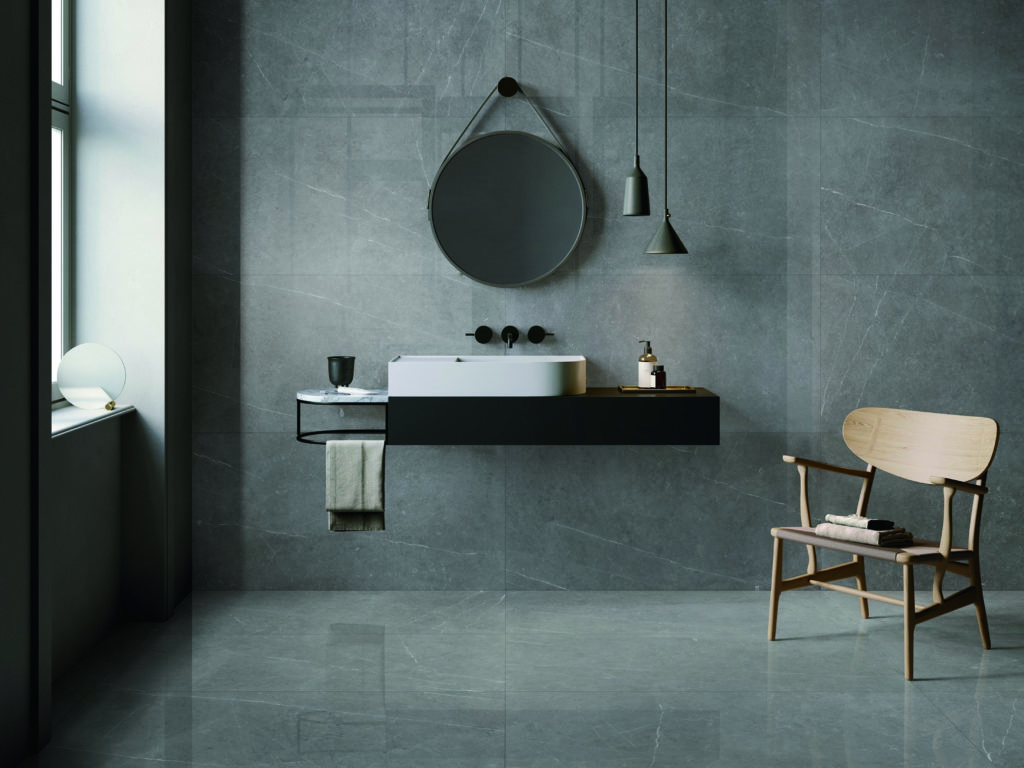
Getting your favorite tiles is only half of the job done. To let your tiles truly shine, you need to install them in proper and correct way. Let us answer your questions about tile installation in the following article.
There are different methods for laying tiles, which one is the most standard?
Adhering tiles with the hard bedding is the most standard way. It also make tiles more durable. To create the bedding, use cement mortar to make the uneven ground level and smooth. You should measure the flatness with horizontal laser to ensure the tiles will be paved on flat surface. Note that the bottom dry and hardened before laying the tiles, otherwise it will affect the quality of the outcome.
Is the bedding material important?
Bedding material is very important and improper material could compromise the safety and durability of your floor. Using suitable bedding material and the correct installation method could ensure the quality of the finished floor. We recommend using tiles glue. The cement adhesive which was commonly used by workers 20-30 years ago, is now out of date. Back in the days, ceramic tile had low density and high water absorption rate, which made cement adhesion a suitable option. With technology advancement, tile products now have low water absorption rate and special adhesive should be used for paving, otherwise there will be a problem of insufficient adhesion.

What is the difference between the origin of tiles?
Many people fancy Italian tiles. Indeed, Italy brands have some uniquely designed tiles. However, the styles used by the general public, such as marble and timber, the design of Chinese-made tiles are mostly similar to those in Italy. Both are also visually excellent. As for the functionality and quality of tiles, it is not directly related to the place of origin, but related to the brand and craftsmanship. Sometimes, you may see some shops selling cheap Italian tiles, but these so-called "Italian" tiles may come from Italian factories with poor production line, or might even be counterfeit. Basically, high-quality Italian tiles from well-known brands tend to be more expensive. Similarly, when purchasing Chinese-made tiles, you should also pay attention to whether the product comes from a well-established brand. No matter what the origin is, you should choose tiles from brands to ensure the quality.
How to predict loss?
We generally recommend including 10% loss when you order your tiles. If you need to do cutting to tiles on-site, for purposes like applying herringbone laying or other patterns, then 15-20% loss is recommended. Consider that if you did not order enough tiles, it may affect the workers to continue the project and increase the labor cost. In addition, replenishment products may come from different batches, and there is a chance of colour deviation. So it is best to buy a sufficient quantity from the beginning. When estimating the amount of loss, the amount calculated from the floor plan can only be used as a reference. Because the actual construction environment will affect the amount of loss, it is best to estimate the loss according to the figure calculated by the works on-site according to the actual conditions of the site.

My unit is relatively small, how to choose the right tile size?
Some might think that if the space is limited, then smaller size tiles should be used. Bear in mind that the size of the tiles will also affect the sense of space. Appropriate use of large-sized tiles can guide the vision and enhance the spaciousness. In the past, when customers considered the size of tiles, they were worried that it would be difficult to ensure the flatness of floor when laying large tiles. With improvement of craftsmanship and rising demand, the current mainstream tiles usually have length of 0.6m and it can reach all the way to 3.6m. It is worth noting that the smaller the tile size, the more seams there will be. On the contrary, the larger the size of the tile, the fewer seams, and the floor would look more better and it would be easier to maintain.

For grouting, what is difference between white cement and grout? What should I pay attention to when using it?
For white cement, after a period of time, the gaps would be relatively more likely to turn black or yellow. As for grout, it is relatively more waterproof and has higher stain resistance due to its high density and low water absorption rate. Tile grout also has more colour options, which can better match different tiles.
Before grouting, you need to clean the tiles to ensure that the surface of the tiles is clean. Otherwise, if the grout is stained with the glue or cement on the surface of the tiles, it cannot be removed after drying. You can only remove all the tiles and do the floor again. Also, after grouting, it is necessary to use a clean water to clean the surface of the tile as soon as possible. This way you could avoid troublesome cleaning of the tile surface after the grout has dried.


